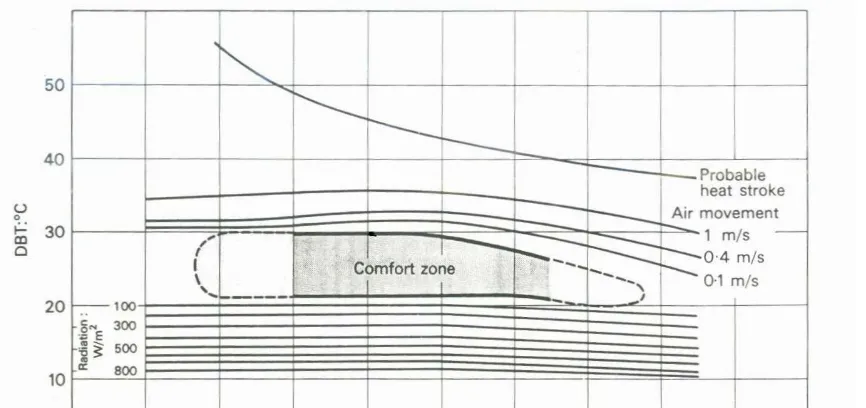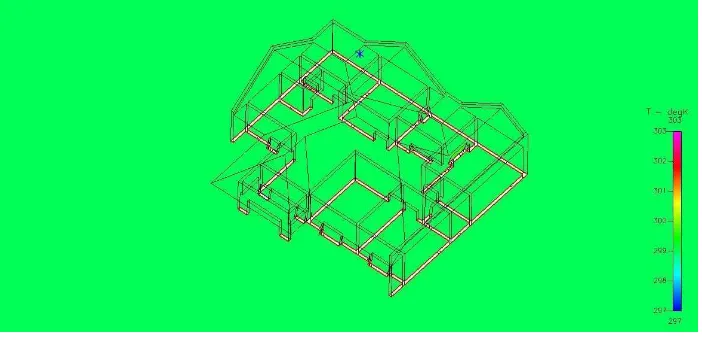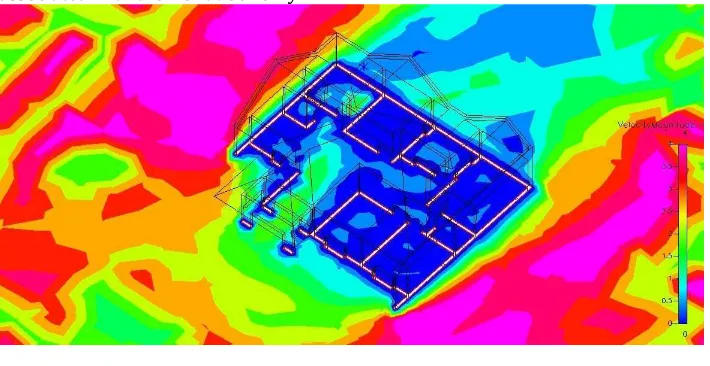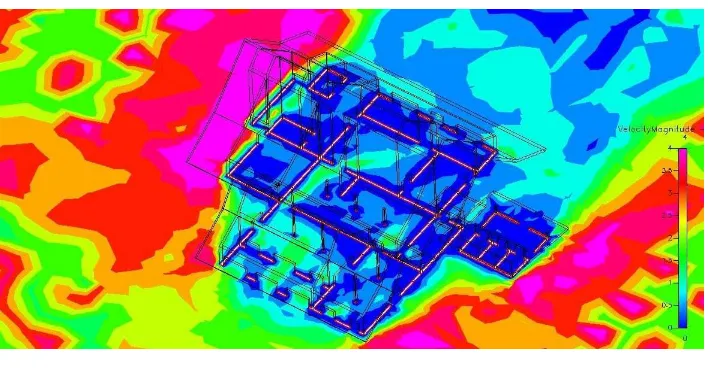Simulation Study of Natural Ventilation in Traditional and
Contemporary Javanese Houses in Yogyakarta
[Blank 14]
Tri Yuni Iswati1[Blank 10]
1 Architecture Department/Engeneering Faculty, Sebelas Maret University, Indonesia [email protected]
[Blank 10]
ABSTRACT
[Blank 9]
Background research is to see how many contemporary houses that much different from the Javanese house, contemporary house is usually attached to each other neighbor's house, do not have a yard, use half a stone wall, while the Javanese house has a large yard, far enough distance between the house and use a single wall stone. Objectives of this paper is to show natural differences in ventilation resulting from the use of materials, and types of homes are these different settings. Methodology used is to use CFD simulations to see how the difference and temperature difference. Using the measurement data base BMKG with winds measured at a height of 10m on the hottest and coldest months. Outcomes are the temperature and wind speed in Java proved to be more comfortable home. Summary The results proved that the traditional Javanese house more comfortable because it uses the hinge side windows, that make it easier for air to flow than the type of window (upper hinge) and one brick wall material further inhibit heat conduction than half brick wall.
[Blank 9]
© 2011 12th SENVAR. All rights reserved.[Cambria 8]
[Blank 9] humidity (%), wind speed (m/s), and two other factor is the activity (W/m2) and clothing (m2 deg C/W). This paper will discuss a particular wind speed will affect the temperature in the room.In this paper will discuss the differences in natural ventilation that occurs in traditional houses Kotagede and contemporary houses in Yogyakarta. This refers to the materials used in both cases.
[Blank 10]
2. Literature Review[Cambria 10]
[Blank 10]
Source:(Koenigsberger, 1978)
Figure 1: Psychrometric Chart
Source: (Satwiko, 2008)
Figure 2: Bioclimatic Chart
Thick walls have a greater time lag. The wall thickness is suitable for humid tropical climate. Because it can maintain the coolness of the room on a hot day. At night is not quite effective because the temperature difference between day and night not too far away. So at night when the temperature of the heat off the wall in the room is still quite high. For the tropical climate is very suitable supported with high ceilings, tile-roofed. In addition the use of multiple windows.That window glass inside and outside blinds are very suitable for humid tropical climate. At Kotagede’s house material used is wood windows, wooden bars on the inside, one brick wall, clay roof tiles, floor tiles, without a ceiling with a large yard.
[Blank 10]
3. Methodology[Cambria 10]
[Blank 10]
The methodology used in this study is the simulation of a simulation study using CFD (Computational Fluids Dynamics) with data from measurements made on the assumption BMKG (Meteorology Climatology Geophysics Board
)
height of 10 m from ground level. Objects being compared are the traditional houses in the area Kotagede and contemporary homes in residential areas Gowok, Sleman, Yogyakarta. Extents compared to approximately 150m2. Assuming the same direction toward the building. Building materials for the aspect that distinguishes the measurement. Simulation by taking data at the hottest temperature (October) and coldest (July).[Blank 10]
4. Results and Discussions[Cambria 10]
[Blank 10]
In Traditional house on the coldest temperature of more 298.5 ˚K = 25.35 ˚C some were 299.5 ˚K = 26.35 ˚C (Fig.4). In Contemporary house on the coldest temperature of all the same inside and outside buildings 299.5 ˚K = 26.35 ˚C (Fig.3). Contemporary on the hottest temperature of more 299.8 ˚K = 26.65 ˚C in some parts of 300.5 ˚K = 27.35 ˚C (Fig.3). Traditional hottest temperature more
299.8 ˚K = 26.65 ˚C in some parts of 300.5 ˚K = 27.35 ˚C (Fig.6).
So at the hottest temperature in both houses contemporary and traditional homes do not have a significant difference because both dominant temperature is 26.65 ˚C and some parts of 27.35 ˚C. but the difference is the coldest month temperature at which the temperature of contemporary home inside and outside the same room is 26.35 ˚C, while the traditional home has a temperature of dominant sections 25.35˚C and the other part is 26.35 ˚C .
Source: (Author, 2011)
Figure 3: simulation of temperature on the contemporary home on the coldest month
Source: (Author, 2011)
Source: (Author, 2011)
Figure 6. simulated temperatures in the traditional home at the hottest temperature
Note:
Navy 0-0.5 m / s Blue 0.5-1m / s Light green 1-1.5m / s Green 1.5-2 m / s
Wind speed seen in contemporary homes both in the hottest month (Fig. 7) and the coldest month (Fig.8) dominant <1 m/s. Although in some sections appears to exist that have wind speeds >1 m/s but very minimal. Whereas in traditional houses either in the hottest month (Fig.9) and the coldest month (Fig.10) the dominant wind speed >0.5 m/s and spread to all parts of the house not only on the front associated with the front door only.
Source: (Author, 2011)
Source: (Author, 2011)
Figure 8. Wind speed simulation in contemporary home on the coldest temperature
Source: (Author, 2011)
to a comfortable temperature is 26.65 ˚C in the hottest month and 25.35 ˚C in the coldest months. materials in traditional house proved to result in temperature and wind speed are comfort.
[Blank 10]
References [Cambria 10]
[Blank 10]
Satwiko, (2008), Fisika Bangunan, Penerbit Andi, Yogyakarta [Cambria8]
Koenigsberger, Ingersoll, Mayhew, Szokolay, (1978), Manual Of Tropical Housing And Building,, Longman Inc, America PO Fanger (1982), Thermal Comfort, Analisys And Applications In Environmetal Engineering, Mc Graw Hill Company, New York Szokolay, SV.(1987), Thermal Design of Buildings, RAIA Education Devision, Canberra
Evans, M. (1980), Housing, Climate and Comfort, John Wiley and Sons, New York Egan, D. (1975), Concepts in Thermal Comfort, Prentice Hall Inc., New Jersey
Idham, C., Aksugur, E. (2006), The Natural Acclimation of Javanese Vernacular House Typology, in Harmony in Culture and Nature, Inta Conference, Yogyakarta
Iswati, T.Y. (2009), Kampung Dalem di Balik Kemegahan Kotagede, UNS Press, Surakarta
Iswati, T.Y.,(2011), Simulation Of Thermal Performance Of Traditional Javanese House Compared With Contemporary House In Tropics Region In Yogyakarta, International Seminar on Climate Change Environment Insight for Climate Change Mitigation, Surakarta



